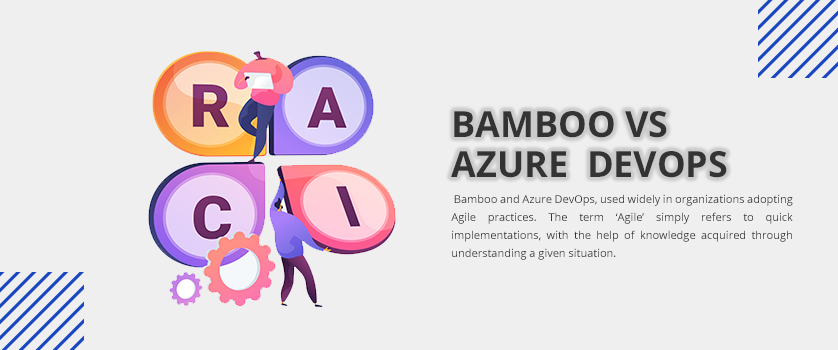


This article talks about two tools - Bamboo and Azure DevOps, used widely in organizations adopting Agile practices. The term ‘Agile’ simply refers to quick implementations, with the help of knowledge acquired through understanding a given situation.
When we refer to agile practices in the IT industry, it is basically an approach wherein implementing changes in an application (software product) is a continuous process. Once the software is rolled out in the market, it is constantly under the scanner, meaning that the product is bound to receive some feature update or a certain version upgrade. The reason can be attributed to the competitive nature of the industry as well as security policies.
This entire process of integrating changes, testing, and releasing is termed as ‘Continuous Integration’ and ‘Continuous Development’.
In a dynamic market where the competition to stay ahead of the curve is soaring high with each passing phase of development in Information Technology, it becomes really imperative to act promptly. For such scenarios, we have various tools that help to perform CI with great ease. The aim of continuously developing and integrating it with the existing software is imperative to meet the market demands.
A CI tool is an efficient mechanism to manage the increasing volume of code to reduce the number of iterations a developer needs to go through while implementing changes. CI offers a platform that simplifies the process of tracking defects by uploading the code into a common repository which can be tested and executed by performing automation tests and fixing them right there before proceeding any further.
Here is a list of few CI tools that are widely used for the range of benefits offered by each.
Apart from the above highlights, few more CI tools worth noting are Codeship, Circle CI, Buddy, Wercker, Semaphore, Solano Labs, AppVeyor, Assertible, Shippable, NeverCode, Bamboo, GOcd, and so on.
In this article, we confine our discussion to a comparison between Bamboo and Azure DevOps tools.
Bamboo was introduced by Atlassian in 2015, with an emphasis on continuous integration and development. Bamboo is a widely used CI tool that helps automate the release of any software application.
Few benefits of Bamboo will help us to understand the concepts better:
Bamboo can be thought of as a central server, which is responsible for scheduling and coordinating the tasks. It has a host of plugins, which can be very useful while uploading source code from any system. With Bamboo, one needs to follow a certain chronology which is as follows-
Azure DevOps is a cloud-based CI tool by Microsoft. It can be understood as a Software-as-a-Service (SaaS) platform, which can be integrated with other tools and is a great choice for orchestrating DevOps development and deployment.
Azure DevOps was launched in 2018, the origin of which can be traced back to the Visual Studio Team System. It is widely popular due to its variety of features and its flexibility.
Some of the distinguishing characteristics of Azure DevOps are as follows:
Azure DevOps is thus quite flexible and can be extended for integration with third-party tools as well. Therefore, this tool has gathered wide acclaim due to its feature-rich platform and has over 80,000 users within Microsoft.
With such diverse features, users have the ease of developing high-performing products which ultimately leads to a higher customer satisfaction index.
To summarize, here is a list of various benefits of Azure DevOps:
The world of agile has a plethora of options to choose from to make your software development and release management process hassle-free. The choice depends on the usage and the very purpose a certain CI/CD tool is expected to solve.